ASRock Z77 OC Formula Review: Living In The Fast Lane
by Ian Cutress on January 15, 2013 1:00 PM EST- Posted in
- Motherboards
- ASRock
- Z77
- Overclocking
ASRock Z77 OC Formula Software
Years of ASRock software has been oriented around the ASRock eXtreme Tuning Utility (AXTU), which has offered basic monitoring and fan selections alongside a series of basic overclocking tools and power saving options. Skip forward and we get implementations of XFast USB, XFast LAN and XFast RAM, all designed to speed up their various parts of the system, and then Fatal1ty ASRock boards get similar selections but with Fatal1ty branded skins. The Z77 OC Formula takes a similar approach, and our AXTU interface is reskinned as ‘OC Formula Drive’, but we get severely upgraded fan controls, options related to the temperature sensors, a memory configuration tool and another tool related to the Rapid OC buttons on board.
OC Formula Drive (OCFD)
The main hub is the reskinned AXTU in the form of the OC Formula Drive. Amazingly the reskin makes it a lot easier to read, although the navigation model is still the same as before, with a list of options on the left hand side and the rest of the options on the right. As a general feeling I find it a little cumbersome to look at, and it does not really fit well with a monitor after an OS install if the screen size has not been increased or video drivers installed. But there is an element of improvement over previous versions.
The initial OCFD menu is our basic hardware monitor listings, giving CPU speed, temperatures, fan speeds and voltages. Like with the front page of the BIOS, if something like this is presented, I also want the motherboard model, BIOS version, CPU model and memory installed information given to me.
The big change is in the fan controls:
As part of the ‘Fan-tastic Tuning’, the system will test each of the six controllable fan headers in terms of RPM against power applied. As we have mentioned a lot in the past, the fan speed and output is not directly proportional to the power applied, and at last someone at ASRock has acknowledged this. As seen in the screen shot, the fan I use follows this trend:
Having that information allows me to select my multi-point fan curve in the GUI with better accuracy. All that is missing from our interface my graph above, and the ability for hysteresis whereby the fan will stay at a higher speed as the system cools down until it reaches a certain temperature, thereby cooling down faster. It should be noted that for the fan options to stick across reboots, users should select the ‘Auto Apply’ and ‘Auto Run’ options at the bottom of the software. It also wouldn’t go amiss if ASRock supplied three or four preset fan profiles, such as Silent, Low Power, Turbo, Always On etc.
Next up in OCFD is the overclock settings, in which not much has changed over the AXTU implementation. The sliders look nicer, and we get options for hot-key overclocks by the button in the top right.
OC DNA deals with saving overclock settings, whereas IES is a one button selection to reduce power consumption by adjusting the amount of power phases being used.
The Multi-Thermal Sensor option is almost analogous to the detail given in the BIOS, whereby we get a list of temperatures and an image showing where those temperature sensors are with the corresponding values. I think it is great to have this level of detail, and all that is missing is a heat-map visual representation of these temperatures.
XFast RAM, as we have covered before on several ASRock boards, allows the user to partition part of their memory off to a RAMDisk, and adjust the system setup to use the RAMDisk for temporary files. A lot of software produces temporary files during calculations, especially when the files are large (video editing, image editing, compression) or just for quick recall at a later date (Internet Explorer), and having a fast read source (up to 5 GB/s in most cases) can speed up the response time of the system. On a personal note, the most memory I have ever used in daily use was 7.7 GB, which was while playing F1 2011 at max settings as well as having all my regular work windows/programs/Chrome tabs open at the time. Thus if users go down the 16GB/32GB route, having a RAMdisk for temporary files might not incur much of a penalty in regular usage.
Rapid OC Configuration
On the top right of the motherboard are a pair of +/- buttons. Like similar features on other OC-oriented motherboards, these buttons allow the user to change the CPU speed or voltage on the fly, rather than through OS tools or the BIOS.

For the enthusiast or power user they have little use, but in terms of competitive overclocking having the option to tweak up another MHz or two can mean the difference between first and second. More often than not the OS can hold a higher MHz than the POST can, so by adjusting the speed after getting into the OS can help with scores. Also, some benchmarks are a mix of CPU and GPU tests, and a CPU can sometimes be clocked higher during GPU tests than CPU tests due to the loading, meaning having an on-the-fly adjustment tool can help there as well.
The tool itself allows the user to adjust BCLK, CPU Ratio or CPU voltage with the buttons, although only one at a time and to change between them requires hotkey adjustment. A small failing in the system is that if the software is not running, there is no default change with the buttons, and having the software running could introduce instability.
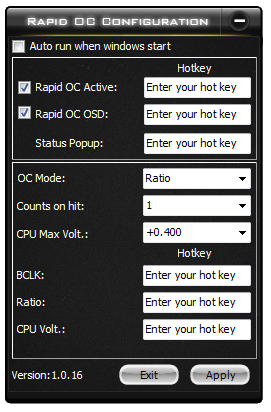
[ASR Z77 OC Software 10 - Rapid OC.png]
Timing Configurator
Aside from the weird name (I would prefer Timing Configuration Tool), the Timing Configurator is a basic variation on ASUS’ MemTweakIt utility which gives a user access to the cast majority of the memory subtimings. Again, in the world of extreme overclocking, having the opportunity to adjust these settings in the OS can help achieve those extra few points.
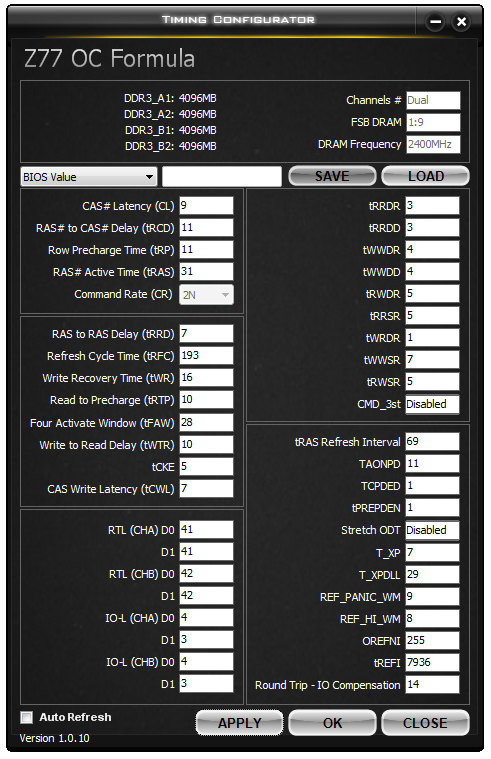
XFast USB
The stalwart of the package XFast USB also makes an appearance. XFast USB performs a small driver swap with the Intel Windows drivers in order to enable faster transfer at the expense of latency. In previous reviews this works really well with USB 2.0 and USB 3.0 under Windows 7, though in Windows 8 the default drivers already have various improvements implemented which where possible can supersede XFast USB if the hardware allows.
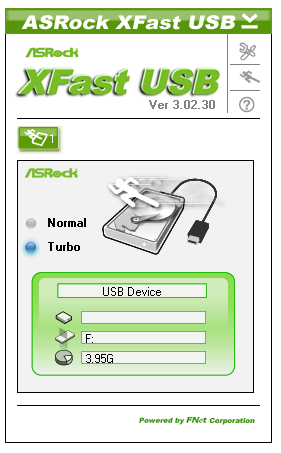
XFast LAN
Also part of the package is XFast LAN, a software based network monitoring and configuration tool. XFast LAN is a licensed and skinned version of cFosSpeed, downloadable for 10 Euro, but which ASRock has a bulk licensing deal for all their motherboards. Through XFast LAN, the user can monitor their network usage, organize which programs have higher priority (VoIP > Game > Browser > Download for example), affix online budgets to each connection, as well as a host of other utilities.


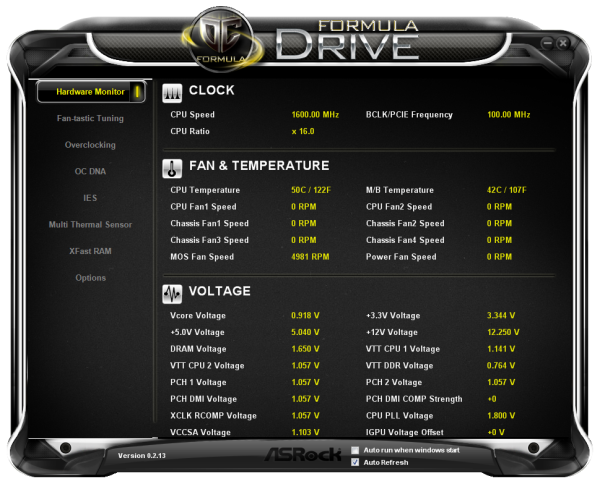
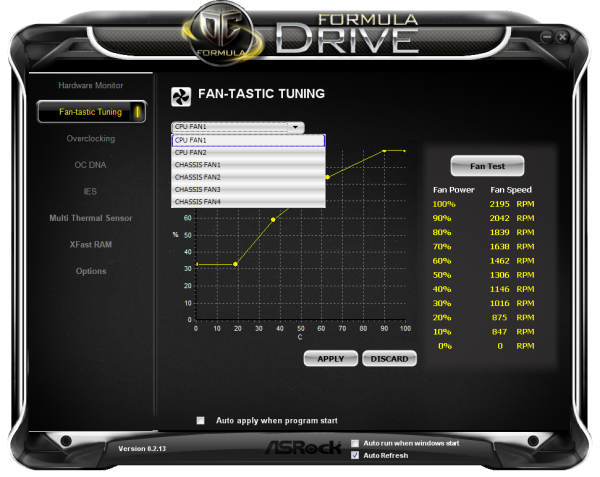
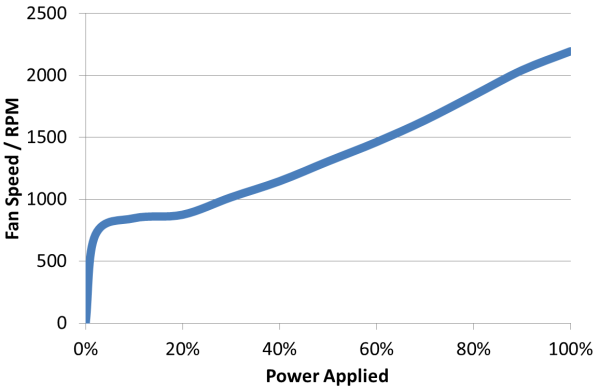

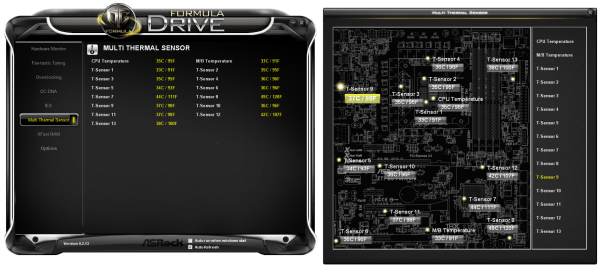

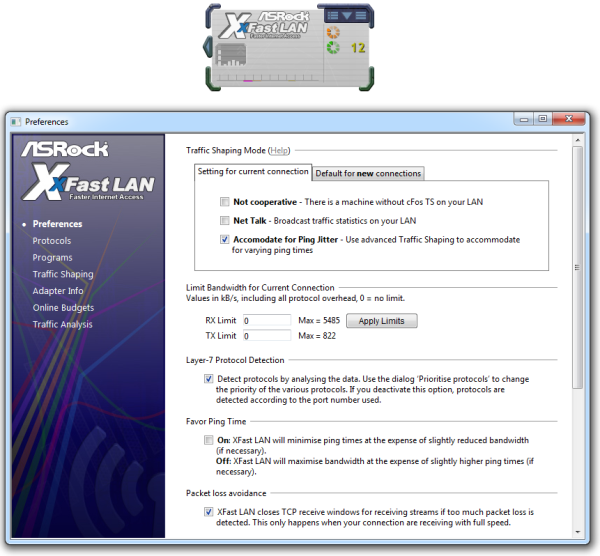

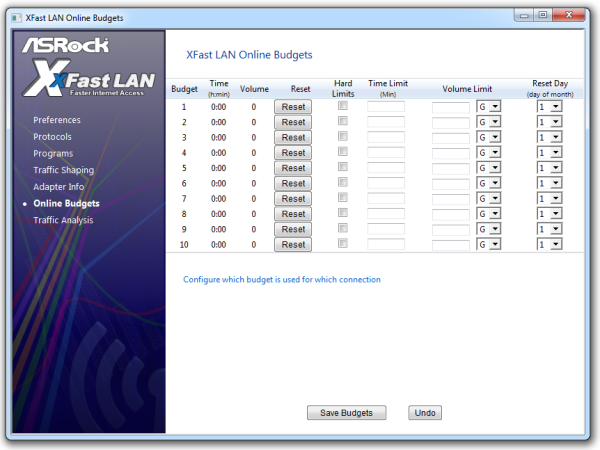














48 Comments
View All Comments
kmmatney - Thursday, January 17, 2013 - link
In the gaming benchmarks the ASRock Extreme4, $100 cheaper, gets the same result, even after the massive overclock on this board. While the overclocking is impressive, you can get a decent overclock with any cheap Z77 motherboard, and spend the difference in price on a better on a better video card, or the next grade of processor.Onus - Thursday, January 17, 2013 - link
I'd like to pass along my own experience with ASRock Customer Support. Cutting to the chase, it was entirely positive. I had obtained the review sample of an ASRock board from another site, which meant there was no warranty coverage. Unfortunately, the board died in the middle of a game. CPU temps were good, and I'd not [yet] had any reason to OC. Although I'd kept it at stock, it was a mini-ITX in a PC-Q08R, and the presence of a HD7870 in the build may have allowed something on the board to overheat, despite the pair of case fans. Anyway, I initiated an RMA request, fully explaining this situation, not trying to avoid their $50 service fee for out-of-warranty products. All correspondence was by email, and was handled quickly, with same or next day (if late) responses. I did pay the fee, but the RMA was handled quickly, and the new board is now just waiting for a brain (I used the original i5-3570K CPU in another build).watersb - Thursday, January 17, 2013 - link
Ian, you are a MOTHERBOARD MADMAN!!! I can't keep up, but I try anyway.Sincere THANKS for these recent reviews. Wow.
The Magpie - Friday, January 18, 2013 - link
I like this board. In fact I like ASRock more and more. I remember the old days when their entire lineup was silly looking, bad performing boards. Those days are gone now and that is great. But that is not the point of this comment.The point is to say that I'm feeling a bit offended by having to read through the same bloody lines, once at the very beginning, and again at the very end of the article. Great technical knowledge Ian, but have some kind of respect for yourself and your work, and don't copy\paste the same lines from the first to the last page. What happened, ran out of things to say? Embarrassing and outrageous for someone who takes the time to read through your entire piece.
waldojim42 - Sunday, January 20, 2013 - link
I see that you are finally testing for some idea of sound quality, and I am quite grateful, but why aren't we hammering on these companies over missing features here? I care about one thing and one thing only; Dolby Digital Live encoding. I don't see why I should be forced to by a $150 Creative labs POS just so I can use the fiber connection for my 5.1 audio.This is a feature that was available as far back as the Nvidia Nforce 2 for crying out loud! Why is this not standard on $200+ motherboards? It cannot be that difficult, and I am sure there are more than a few gamers out there that would be happy to see this.
As of right now, the ONLY motherboard on my radar is the Gigabyte Sniper 3. Sadly, they used a Creative chipset to get the job done, but at least it is built into the board.
Anand, could you possibly reach out to these manufacturers and get them to understand people want this? The worst part, is that it is quite obvious there is very little in licensing costs involved, if Creative is anything to go by ($5 to get DDL on your current product!) and that is money well spent.
IanCutress - Friday, January 25, 2013 - link
Would you be interested in B75 with a Creative chip? Drop me an email with specifics. I'm not an audio nut (tone deaf too), but I can pass on some info :)Ian
jimmyzaas - Tuesday, January 22, 2013 - link
I was very close to picking up the Z77 OC Formula. The only thing that I didn't like was that tiny fan for the VRM. I've had an Abit board before with the southbridge fan and about 2 years in, it started to get louder and louder until all you hear is grinding noise. Issue was that whole assembly was proprietary and replacing the fan means replacing the entire heatsink. Since then, I've vowed not to get any mobo that needed a fan of any kind.My question is.. do the VRMs get that hot that they require active cooling? I mean no other boards, including that monster Gigabyte UD7 needed fans? Or is it just for show.. if so, it is a retarded move. Second question, is it like a standard 40mm fan that can be replaced easily? If not, is the board still stable with NO fan attached.
To the poster above wondering about the Sniper board.. I have it and that audio is the best I've ever had from a motherboard. I have a Gigabyte board with Realtek 889 audio and the Core3D just crushes it in every way. Now I haven't heard Realtek 898 on my sound system, so I can't compare.. but I'm really blown away by the sound. Not really impressed by Killer NIC though.
IanCutress - Friday, January 25, 2013 - link
The VRM fan is predominantly there in case (a) low air flow situation, like a closed-loop liquid cooler, or (b) hot ambient climate. You are perfectly justified in taking the connector out if neither of those apply to you. VRMs during normal stock usage are easily cooled by cross air flow, but as you start hitting 4.8 GHz+, they might start kicking out some heat if you are constantly hammering the CPU with loads. A small 40mm fan probably doesn't do much in that case, but it does something.With regard to the UP7, they use IR3550s, which are designed to pump out less heat for the same power - and there's 32 of them, so the heat generated is spread around such that the long extended heatsink can take care of everything.
Ian